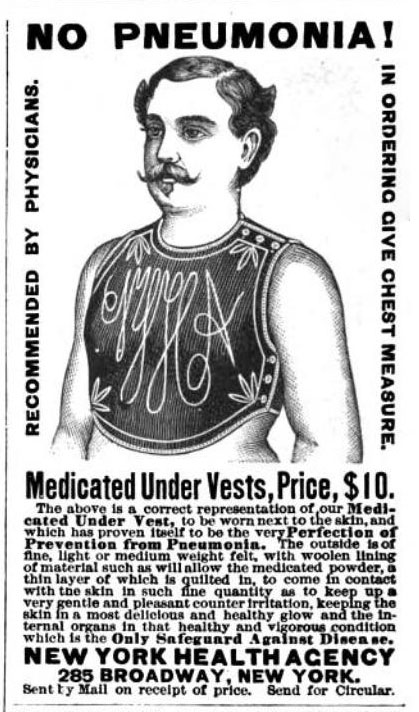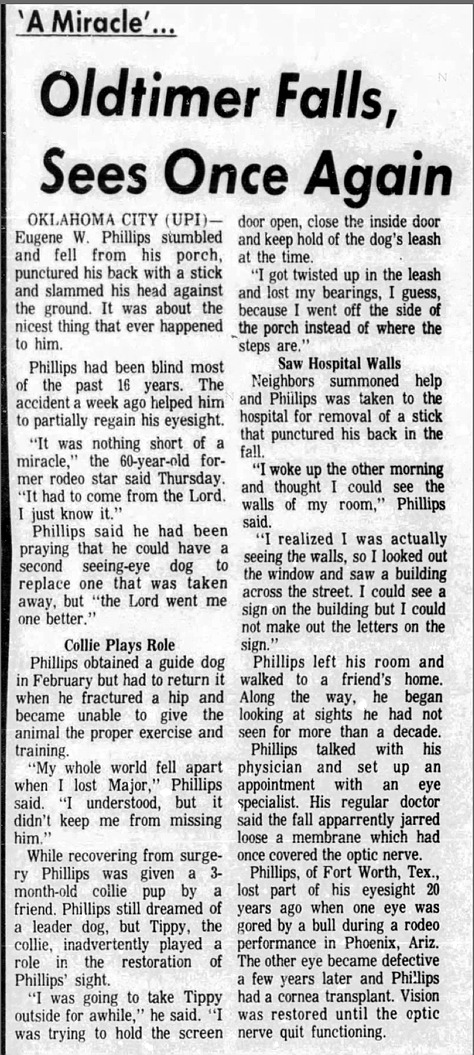Health
Health Jolting Chair
Oliver Halsted was granted a patent for an "exercising machine" in 1844. It was later marketed as the Health Jolting Chair. AKA the "wake-up chair." By pulling the levers on the side, it would bounce up and down. It was said to be a panacea for "dyspepsia, liver complaint, low spirits, general debility, constipation, 'so-called malaria,' jaundice, melancholia, and anemia."
Image source: Natl Lib of Medicine
Posted By: Alex - Sun Sep 27, 2020 -
Comments (0)
Category: Exercise and Fitness, Health, Inventions, Patents, Nineteenth Century
Making Mercury Thermometers
The COVID pandemic has certainly made thermometers part of everyday discourse. Once upon a time, the mercury-filled instrument was the only home-friendly device available. I was not even sure you could buy one these days, but Amazon sells several "liquid-filled" devices. Here is some info from the vendor at the Amazon link.

Posted By: Paul - Mon Jun 15, 2020 -
Comments (9)
Category: Body, Diseases, Health, Technology, Twentieth Century
Concentrated Ocean Water
A dubious medical cure-all from the early 1960s: bottles of briny water marketed as 'concentrated ocean water'.The sellers claimed it could prolong life, cure arthritis, cancer, Parkinson's disease, hardening of the arteries, etc.
The FDA, which shut down the companies selling it, called it "the great sea salt swindle."
I couldn't find anyone selling concentrated ocean water today. Though there are plenty of present-day products that are similar in spirit — such as those cans of Swiss Mountain Air I posted about recently.

Newport News Daily Press - Apr 21, 1961

Arizona Republic - Mar 26, 1961

Tampa Bay Times - Apr 24, 1961
Posted By: Alex - Wed Jun 03, 2020 -
Comments (6)
Category: Health, Patent Medicines, Nostrums and Snake Oil, 1960s
Your Biological Safety Mask
Posted By: Paul - Sun May 17, 2020 -
Comments (2)
Category: Health, War, Children
Howard Obesity Ointment
I can't find any description of what was in this ointment, but it sounds like something out of a horror story.

Munsey's Magazine - vol 29, 1903
Posted By: Alex - Tue May 05, 2020 -
Comments (4)
Category: Health, Advertising, 1900s, Dieting and Weight Loss
Medicated Under Vest
Not only a medical miracle but a fashion statement as well."has proven itself to be the very Perfection of Prevention from Pneumonia…. keeping the skin in a most delicious and healthy glow and the internal organs in that healthy and vigorous condition which is the Only Safeguard Against Disease."

Posted By: Alex - Fri May 01, 2020 -
Comments (6)
Category: Fashion, Underwear, Health, Disease, Nineteenth Century
Canned Sunshine
The idea of using sunlight to kill viruses inside the body has recently been in the news. That made this old invention I posted about last month seem topical.Edward W. Boersteler, of Watertown, MA, was the inventor of the ‘Curay Light Applicator,’ aka ‘Canned Sunshine.’ Back in the 1920s and 30s, he marketed it as a cure for the common cold. It emitted ultraviolet light, which people were supposed to shine down their throats, killing the germs.
In the selection of text below (taken from an article in the Chilicothe Constitution Tribune - Oct 16, 1925), I didn't correct any of the misspellings. In particular, I wasn't sure whether the phrase "ultra violent light" was a mistake, or intentional.
“Fused quartz transmits ultra violent or invisible light without loss, whereas ordinary window glass shuts out ultra violent light which is the curative agent in sunshine.
“In the Curay Light aplicator,” Boerrsteler continued, “we have produced a source of radient energy closely approximating concentrated sunlight in the upper altitude, with an equivalent ultra violent content. Though it is a potent germ killer, it is harmless to the cels of the body.

image source: Harvard University Collection of Historical Scientific Instruments

Chilicothe Constitution Tribune - Oct 16, 1925
Posted By: Alex - Fri Apr 24, 2020 -
Comments (4)
Category: Health, Inventions, Cures for the common cold, 1920s
Regained sight after fall
Another case of an improbable cure.Eugene W. Phillips, 60, had been blind for 16 years. Then, in August 1972, he fell off his back porch, puncturing his back with a stick and hitting his head on the ground. But he also partially regained sight in one eye. His doctor concluded that the fall had jarred loose a membrane that had been covering the optic nerve.

Bonham Daily Favorite - Aug 8, 1972

Provo Daily Herald - Aug 9, 1972
Related:
Posted By: Alex - Mon Mar 30, 2020 -
Comments (0)
Category: Health, 1970s, Eyes and Vision
Intestinal Chimney Sweeps
Back in the early twentieth century, the French laxative Jubol ran an ad campaign that featured tiny chimney sweeps climbing up into intestines and scrubbing them out.It reminds me of that old urban legend about Richard Gere and the gerbils.

Image source: vintage-ads — historical source: Rire - Dec 14, 1918

"Voila le petit ramoneur de l'intestin..." (Here's the little chimney sweep of the intestines)
L'Illustration - June 10, 1916
Posted By: Alex - Sat Mar 28, 2020 -
Comments (2)
Category: Health, Advertising, 1910s
The man whose blindness, deafness, and baldness was cured by lightning
We've reported a few cases on WU of people who have experienced accidental (and improbable) cures, such as the woman whose deafness was cured by a sneeze. One of the most famous examples of this phenomenon is the case of Edwin Robinson, who claimed that being struck by lightning cured him of his blindness and near-total deafness.The lightning strike occurred on June 4, 1980 when he ventured outside of his home in Falmouth, Maine to rescue his pet chicken from the rain. After lying unconscious for 20 minutes, the 62-year-old Robinson awoke to find himself cured of the ailments that had plagued him since a road accident nine years earlier. An ophthalmologist who examined him, Dr. Albert Moulton of Portland, said: "There is no question but that his vision is back. He can't move his eyes, but his central vision is back... I can't explain it. I don't know who can. I know some of my peers in Washington, maybe, will say it's hysterical blindness. I can't see it. It couldn't have lasted this long. From the physical findings originally, he was definitely blind."

Edwin Robinson reads about his miraculous recovery
Later, Robinson even claimed that new hair had begun to grow on his bald head. He remarked to the NY Times, "I'm all recharged now, literally... It's coming in thick. My wife is all excited about it. I was bald for 35 years. They told me it was hereditary."

Los Angeles Times - July 5, 1980
Later, Timex took advantage of Robinson's fame to feature him in a 1990 ad. Although the messaging seems a bit confused. Once broken, but now miraculously fixed?
Also, it's hard to tell, but he doesn't seem to have a full head of hair. He must have lost it again.

Source: AdsPast.com

St. Louis Post Dispatch - June 7, 1980
Posted By: Alex - Tue Mar 24, 2020 -
Comments (3)
Category: Health, 1980s, Eyes and Vision

| Who We Are |
|---|
| Alex Boese Alex is the creator and curator of the Museum of Hoaxes. He's also the author of various weird, non-fiction, science-themed books such as Elephants on Acid and Psychedelic Apes. Paul Di Filippo Paul has been paid to put weird ideas into fictional form for over thirty years, in his career as a noted science fiction writer. He has recently begun blogging on many curious topics with three fellow writers at The Inferior 4+1. Contact Us |




